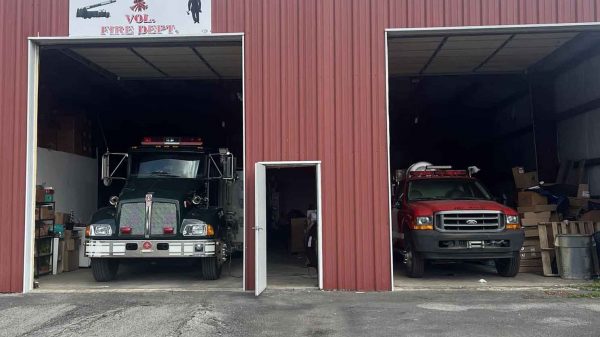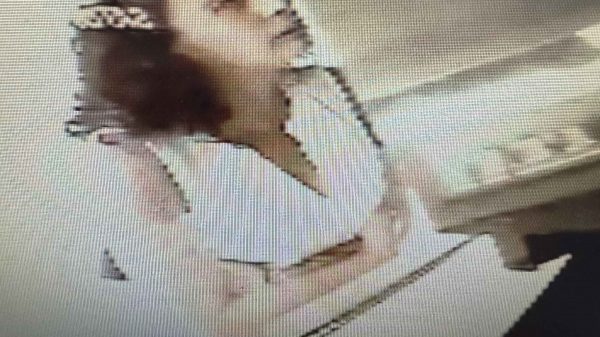By Dr. William M. Hall
Son of Dr. Lloyd M. Hall and has practiced medicine in Rural Kentucky. Written ~2010
“See that house over there against the hill?” Doc exclaimed, “I treated three members of that household for diphtheria when I first came to the county.” This comment was made as I was driving him on one of many house-call trips throughout Magoffin County. On this particular day, we were traveling along Salt Lick Creek, up the Licking River from Royalton, Kentucky.
I, William M. Hall, was born in Magoffin County, Kentucky, in 1939, the youngest of three children of Dr. and Mrs. Lloyd M. Hall. Our father, Lloyd M. Hall, M.D., hereafter referred to as “Doc,” practiced general medicine in Magoffin County from 1932 – 1975. I was witness to some of the trials and tribulations he encountered in his professional life, as well as the many rewards he experienced. I was also privy to medical conversations between Doc and his physician brothers and nephews who practiced medicine in adjoining Johnson County.
I graduated from the College of Medicine, University of Kentucky, in 1965 and have practiced medicine in rural Kentucky. It is with this background that I attempt to shed some light on the history of medical care in Magoffin County and to reflect on the progress made in medical care from the “horse and buggy” days to the present. This is written from a rather narrow personal perspective. I do not intend to glorify my father in writing this. Many individuals have served Magoffin County and contributed to the growth of its health care. The list is too long to mention them all. They are omitted because the story is much bigger than any people. This is the story as I perceive it.
When Doc came to Magoffin County in 1932m after graduating from the University of Louisville College of Medicine that same year, times were hard. The Great Depression had begun and he was in education debt of $10,000 – a great deal of money at that time. He chose to begin work in Magoffin County because he liked the people of Eastern Kentucky, and its location was close to his native Johnson County, where his family lived.
As a medical student, he and his classmates had delivered many babies throughout Louisville. He had seen many cases of infectious diseases which were life-threatening then; today, those diseases are rare and treatable. Diphtheria was one of the serious diseases then which is now preventable by a vaccine developed in the 1940s. Whooping cough, measles, chicken pox, and mumps, all of which could have dangerous side effects, are now preventable by vaccines, as well. Rheumatic fever and heart disease were common; proper treatment for streptococcus infection to prevent these diseases is available now. Many types of pneumonia were common and could be treated only expectantly. Some forms of pneumonia are now preventable by vaccination, and most respond to antibiotics. Typhoid epidemics were not rare; today, improved sanitation measures and clean water supply have almost eradicated the threat of typhoid. Renal failure, as well as heart failure, both acute and chronic, took a toll on many.
Doc found treating these maladies a challenge. They were common in Magoffin County in the 1930s. His armamentarium of effective drugs was not limited to only a few choices. Morphine was a reliable opiate, as it is today. Aspirin was a good analgesic and anti-inflammatory. Digitalis was good for strengthening a weak heart. Heavy metal therapy was given for syphilis. Sulfa drugs became available in the late 1930s and were effective against some bacterial infections.
The 1930s had not seen much improvement in rural medical care since the founding of the county in 1860. Anesthesia and antisepsis in operating theaters had advanced. X-ray had been discovered in 1895.
Rabies prophylaxis was available in a series of injections, thanks to Louis Pasteur. Public health departments had been established to ensure some sanitation measures, as well as quarantine of patients with infectious diseases. Tuberculosis was still a dreaded and often fatal disease.
Access to any medical care was limited by the lack of infrastructure. Many places in the county could not be easily reached by automobile. Doc made many house calls by riding horseback. He became familiar with the good traveling horses in different sections of the county. One such horse was owned by Gunde (?) Gardner. When Doc got a telephone call requesting a home visit in a remote area, he would request that a known good saddle horse be brought to meet him at a point where further travel by car was too risky. He would then ride the remaining distance on horseback. He had a reputation for demanding a lot of a mount. On returning from one such call on an unfamiliar horse, he was asked how he liked the filly. After giving a bland response, he was told, “Doc, that’s the first time that horse has been ridden!” (He took great pride in telling this story!)
In the 1930s and 1940s, Saturdays brought the rural folk to Salyersville, especially in good weather. The streets would be congested with horse and mule-drawn wagons. The local stores, restaurants, pool rooms and movie theaters were very busy.
The doctors’ offices were also packed. Similar to today, many people suffered from psychosomatic complaints and anxiety. Relief was sought in the doctor’s office, often on Saturday. Phenobarbital elixir was dispensed and refilled many times as a “nerve medicine.” The same drug and dosage came as either a red or green elixir. Some patients would swear that one color of the other produced the desired relief, and therefore was the better of the two!
I can remember Doc coming home from his office in midday exhausted. He would nap for about 45 minutes on the floor, and then go back to work. His many night calls deprived him of much sleep. Today, the hospital emergency rooms in the adjacent counties fill the need for nocturnal care, and do so much more effectively.
During the 1940s and 1950s, I was forbidden to swim in the Licking River during the “dog days” of summer. There was a pervading fear of polio during this time. Some of my contemporaries did contract this dread disease with some residual paralysis. Thanks to the vaccine of Dr. Sabin, developed with the support of the March of Dimes, poliomyelitis is almost non-existent in the United States.
Prenatal care has markedly reduced maternal and newborn morbidity and mortality. Doc was often called to see a patient in labor who had not received any prenatal care. I made one call with him to see the patient.
Tragically, the young woman had hemorrhaged to death, without delivery, before we arrived. Today, prenatal care is readily available. The Magoffin County Health Department has the means to ensure that competent care is rendered. As is a prevalent problem in most areas, the people in need do not necessarily seek the proper attention.
There were some rewards in his practicing obstetrical care: many residents of Magoffin County were delivered successfully at home. (I am my siblings were products of a home delivery.)
Doc remembered many stories about his obstetrical practices. On one occasion he was called to a home several miles up Licking River. When he examined the patient, he found her not quite ready to deliver. He had experienced a trying day, and he was dead tired from lack of sleep the previous night. His patient was lying on the only bed in the house. Doc asked her to walk some to stimulate labor. She complied and he lay across the bed, and fell asleep. At daylight Doc awakened to find the patient still on foot, walking. (The woman did not deliver until a week later!)
Modern-day communications have greatly facilitated the delivery of health care. Cell phones and satellite communications make information and consultation immediately available. In the first half of the 20th century, landline telephone service was available, though limited, in most areas of the county. When Doc made a house call, someone at home or at the office knew where he was going. If an emergency call came, he could be located. The lack of modern communication, such as cell phones, necessitated that someone attend the office or home telephone.
Beecher Crase, Doc’s reliable and much-liked office assistant of many years, monitored the telephone many hours. My mother did the same, and often my siblings and I took phone duty, as well. Luther Dean Dunn, who worked some with Doc as an ambulance driver, said that some of the people of Magoffin County couldn’t sleep well if they thought that Doc was unavailable!
Doc referred many emergencies and complicated cases to Huntington, West Virginia, and to Lexington, Kentucky. Until recently, roads to both these cities were no pleasure to travel. Route US 460 to Mt. Sterling on the way to Lexington was curvy and hilly and liable to produce car sickness. It was a three-hour drive via US 460 and then US 60 to Lexington. Route US 23 from Paintsville to Louisa en route to Huntington was a gravel road.
Today specialists are available in modern hospital facilities in nearby Morgan, Johnson, Floyd, Pike and Rowan counties. Paintsville and Prestonsburg can be reached on super-paved highways. The completion of the Mountain Parkway in the early 1960s allowed remarkable access to Prestonsburg and Lexington. The new US 460 completed in 1977 gives very easy to access to Paintsville. Route US 23 from Paintsville to Ashland also makes specialized medical care more readily available.
The building of paved roads throughout the county has paralleled the progress of medical care. Doc’s initial transport was a Model A Ford, supplemented by horseback. On one spring day, on a house call trip up Burning Fork, we got the Model A Ford stuck in the mud at Cain’s Store at the mouth of Rock House. After World War II, he acquired a Willys Jeep, which could be driven almost everywhere. His transportation by horseback dwindled, thanks to the Jeep and improved roads. Today, almost any residence in the county can be accessed with a vehicle.
Doc had a small portable x-ray machine in his office which did a competent job on most occasions. Chest X-rays on average-size patients were diagnostic. Reliable extremity images could be obtained.
Occasionally the x-ray machine was transported via pickup truck to x-ray a home-bound patient. This was done mainly for elderly patients with suspected hip fractures.
Doc witnessed marvelous progress in medicine from 1932 – 1975. After penicillin, truly a miracle drug, many antibiotics became available in the 1940s and 1950s.
The 1950s and 1960s saw the closure of many mental hospitals as a result of the development of pharmaceuticals. Tuberculosis hospitals were closed also as a result of anti-tubercular drugs. The lives of many Magoffin residents were positively influenced by this progress.
Since Doc’s retirement in 1975, there has been astounding progress.
Ancillary medical services have much improved the lives of Magoffin residents. The first E.M.T. class was offered in 1974, and Carter Conley enrolled as a student. Upon completion of the course, he started a Rescue Squad, which is serving the county today with distinction under his leadership. [Written before Conley’s passing in 2022]
Transportation of ill individuals needing medical attention was provided by ambulances from the local funeral homes in the 1950s and 1960s. The most medical equipment they carried was an oxygen tank and maybe splints for fractures. Today, the county has an ambulance service, begun in 1975. Paramedics of the ambulance service are able to monitor patients closely and render life-saving measures if needed. Some emergency treatment available in an ambulance today is more effective than was possible in the 1950s emergency rooms.
New modalities have far surpassed science fiction imagination of the 1950s. Modern computers have made possible computed tomography, magnetic resonance imaging, nuclear medicine imaging, and ultrasound, as well as others. These modalities can give images and information that a pathologist doing a post-mortem exam cannot see, or a surgeon looking directly cannot discern. Amazing! These advances are all available at nearby facilities. The computer has also given us the ability to screen immediately for many diseases by analysis of a few drops of blood or other body fluid.
Doc had little to offer with most cases of cancer except consolation and pain relief. Today, many of the dread neoplasms (cancers) can be successfully treated, and some, remarkably, cured.
Screening for early cancer has dramatically reduced the death rate. Found early, most cancers can be cured or controlled. Mammography, developed in the 1980s, done yearly can detect 80 – 90% of breast cancer early. Mammograms are performed at local hospitals routinely. The Magoffin County Health Department can provide means for these to be done if other resources are not available.
Modern physics has given us fiberscopes, which allow us to see around many corners. These have made the early diagnosis of gastrointestinal cancer, especially colon cancer, possible. This technology has also allowed the surgeon to be less invasive, thus reducing post-operative suffering and recovery time. Magoffin residents now receive benefit from this technology.
As I have participated in the progress in the field of medicine, I never cease to be astonished. Imagine being able to detect a small heart defect in a 20-week fetus in its mother’s womb; imagine being able to see a small tumor in the abdomen or brain or a tear in a tendon in any joint. All this can be done non-invasively. And, now these conditions can also be treated with the use of a small scope. Incredible!
In the past 150 years Magoffin County has taken its place in modern society. This has been made possible by the development of infrastructure, especially improved highways and modern technology.
The citizens of Magoffin now have access to competent medical care on par with most of the people in the United States.
Although care is available, it is distressing to observe that many people do not take advantage of what is readily available. Vaccines now exist to control many infectious diseases; these are not taken by many people.
Lifestyle changes to improve health are ignored. Screening procedures for cancer are not utilized.
Since Doc began practice in 1932, there has been an explosion of scientific and technological advances. Let us hope that this century witnesses a similar growth in social attitudes and personal responsibility for health care!




















